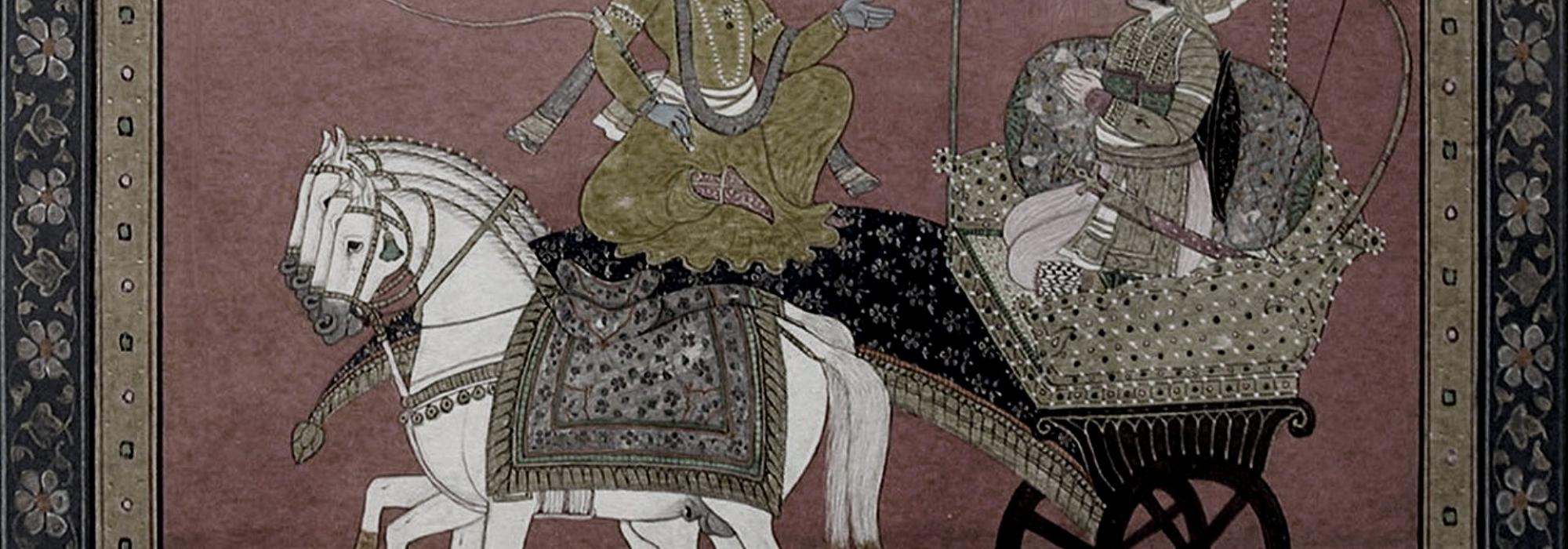Note: This is the English translation of Dr. S.R. Ramaswamy’s Kannada article titled “Giteya ananyate” published in the December 2018 edition of the “Utthana” magazine.
The world famous writer on spirituality, Paulo Coelho said the following on a recent occasion: “The moment I read the Bhagavad Gita, I fell in love with the book. It continues to be my book for all times. The Gita teaches you to understand the mystery, accept your destiny and when there is a battle to face, to go forth and fulfil your task.”
This is the same feeling on the part of every honest seeker who has been introduced to the Bhagavad Gita.
No matter what we may set out to say about the Bhagavad Gita, there is the possibility of repetition. Therefore, instead of expounding on its teaching in detail, the limited intent of this essay is to spot the elements that make it so singular and responsible for its widespread appeal. It is also hoped that this backdrop will help those who are interested to study the Gita in depth.
Friendly Tone
A few words will suffice to recall the main teachings of the Bhagavad Gita. One must be firmly rooted in the constant meditation on the Brahman and lead a fruitful life in this world—the Gita teaches this in colloquial language. Although the teaching is in the format of a Guru-disciple conversation, it is a conversation based on friendship; it is a conversation bereft of philosophical complexities. Familiar words like mokṣa, saṃnyāsa, vairagya are used here in a non-technical and broad sense. What is here is not an authoritarian voice; on the contrary, it is a tone of friendly persuasion that coaxes one to adopt any method that suits his/her temperament in order to attain spiritual elevation. It also infuses the optimism that any path of inquiry and contemplation followed with unwavering conviction leads to sadgati or spiritual liberation. The most important element here is the honesty of effort/pursuit. Yoga is the constant practice of the control of the senses, an attitude of sacrifice and desire to do good in the world. In all these, there is no question of neglecting any worldly duties. Instead, the teaching here is: no matter how learned or wise a person is, there is no question of swerving away from performing one’s duty.
One must see to it that there is restraint in one’s worldly transactions. The Gita has declared that every work that is not tainted with the rage of selfishness is a Yajna.
In this manner, the Gita has expanded the traditional boundaries of life-fulfilment. It is for this reason that the Gita has received all-encompassing acceptance. The Gita is a handbook of life, that is, the flowering of one’s personality, than a work of pure Sastra. It is not a sectarian work by any standard. The Gita itself describes its intent in the form of a beautiful and concise word, lokasaṃgraha (welfare of the world). If one face of the coin called “fruitful life” is Self-realisation, the other face is lokasaṃgraha or the pursuit of lokakalyāṇa (auspiciousness in the world). Control of sense organs and sacrifice of selfishness are not easy, and are attainable only through arduous practice. The dialogue in the Gita firmly rests on the full realization of this truth. This is the reason it has become close to everybody and has gained their affection.
As far as the sum and substance of the Gita is concerned, this much should be sufficient for the present purpose.
Now we can examine some specialties of the Bhagavad Gita.
A Classical Work
In the corpus of great literature, one can spot two broad streams—classical works and customary works. In classical works, there are elements that not only provide refinement and high culture, but there are also elements that transcend the transactional dimension and provide us with insights of a profound sort. Works belonging to the second stream appeal to us for their high literary quality and the knowledge of language usage and other poetic devices they contain. Both streams culture us. However, the impact and influence of classical works is long-lasting and enduring, and therefore dynamic. The impact produced by these works on the practitioner lies beyond the pale of mere literary confines. The role of such works in shaping an entire civilization is immense. They become vehicles for transmitting eternal values. These works come in handy as primary sources and yardsticks for judging values. The number of such works in any language of the world can always be counted on one’s fingers. Although they are composed in the local language, their appeal and prestige is time and space neutral.
The Bhagavad Gita is a work that belongs to this classical category. Not just that. It is the crown-jewel of all classical works. It has earned the highest place in the eyes of all philosophical schools/streams. It is the universal and time-space-transcending foundation. It is the highest representative work in the realm of the pursuit of philosophical inquiry springing from Sanatana Dharma. It contains the expositions of almost all major premises in Vedanta Darshana. There is no other work in the annals of the Vedantic corpus that contains the staggering number of commentaries as the Bhagavad Gita—this in itself is a great proof of its unparalleled esteem. Even after 5000 years of its composition, it continues to be the subject for exploring newer and newer meanings. This apart, it has also become a subject to explore in non-philosophical realms—as a handbook for personality development, as a guide in business management, etc. In this fashion, only classical works have the innate capacity to offer newer possibilities for every age.
Lokamanya Tilak used the arena of (Indian) spiritual thought as a complementary element in his political struggle. This became a miracle of sorts given the backdrop of his endeavour to arouse mass-awakening in favour of independence and against alien colonial rule.
In the years of freedom struggle, Tilak, Malviya, Gandhi—all of them primarily used the Bhagavad Gita to instill valour and heroism among the people. Revolutionaries and patriotic martyrs like Chapekar, Khudiram Bose, Ramprasad Bismil—all expressed a desire to hold a copy of the Bhagavad Gita in their hands in the final moments before they were hanged to death. Bankim Chandra who gave the “Vande Mataram” battle cry to the nation had himself written an erudite commentary on the Gita.
In his statement to the court, one of the accused in the Alipore Bomb Case, Upendranath Bandopadhyaya said, “I got my inspiration to become a devotee of the Motherland from the discourse on the Karma Yoga in the Bhagavad Gita.”
The revolutionary freedom figher Yatindranath Mukherjee would begin his daily routine only after chanting the Bhagavad Gita.
To be continued




































